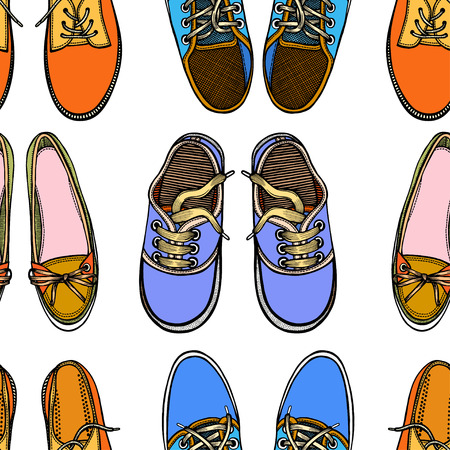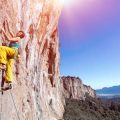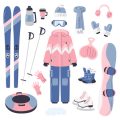1. Why Choosing the Right Summer Hiking Clothes Matters
When youre hitting the trails in the U.S. during summer, what you wear can make a huge difference in your overall hiking experience. The right summer hiking clothes are not just about style—they’re essential for staying cool, comfortable, and safe under the hot sun.
Stay Cool and Beat the Heat
Summer temperatures can soar in many popular American hiking spots, from the Rockies to national parks like Yosemite or Zion. Breathable fabrics and lightweight materials help your body regulate temperature and wick away sweat, so you don’t overheat or feel sticky on your adventure.
Main Benefits of Summer Hiking Clothes
| Feature | Why It Matters | Examples |
|---|---|---|
| Breathability | Keeps you cool and dry by allowing sweat to evaporate quickly | Moisture-wicking shirts, mesh panels, quick-dry shorts |
| UV Protection | Shields your skin from harmful sun rays, reducing risk of sunburn and long-term damage | UPF-rated shirts, wide-brim hats, neck gaiters |
| Lightweight & Packable | Makes it easier to move and carry extra layers if needed without weighing down your pack | Nylon pants, ultralight windbreakers, compact rain shells |
| Durability & Protection | Protects against scrapes, bugs, and rough terrain while lasting through tough hikes | Ripstop fabric pants, reinforced seams, insect-repellent clothing |
Avoiding Common Summer Hazards on the Trail
The right clothes also offer a layer of defense against common summer hiking risks in America—like sunburns, dehydration, heat exhaustion, and even insect bites. For example, moisture-wicking shirts not only keep you drier but also help prevent chafing. Long-sleeve options with UV protection keep you safer from intense sunlight found at higher elevations or open desert trails.
Your Health Comes First
Dressing appropriately isn’t just about comfort; it’s about safety. Overheating and sun exposure can lead to serious health issues like heat stroke or severe burns. By choosing smart summer hiking gear designed for American trail conditions, you can enjoy the outdoors while keeping your health top priority.
2. Essential Fabrics and Materials for Hot-Weather Hiking
When it comes to summer hiking, picking the right clothes can make or break your outdoor adventure. In the U.S., outdoor enthusiasts swear by certain fabrics that help keep you cool, dry, and comfortable on the trail. Let’s break down what you should look for in hot-weather hiking gear.
Why Fabric Choice Matters
Not all materials are created equal when it comes to handling sweat, heat, and sun exposure. The best summer hiking clothes are made from fabrics that:
- Wick moisture away from your skin
- Dry quickly after getting wet
- Feel light and breathable
- Offer some UV protection
Top Summer Hiking Fabrics
| Fabric | Main Benefits | Common Uses |
|---|---|---|
| Synthetic (Polyester/Nylon) | Excellent moisture-wicking Quick-drying Lightweight |
T-shirts, shorts, base layers, socks |
| Merino Wool | Naturally odor-resistant Moisture-wicking Regulates temperature well |
Socks, lightweight shirts, underwear |
| Bamboo Blends | Soft feel Breathable Antimicrobial properties |
Tops, underwear, lightweight hoodies |
| Cotton (for casual hikes only) | Soft and comfortable Affordable |
T-shirts (not recommended for intense hikes) |
Synthetics: The American Go-To for Summer Trails
Synthetic fabrics like polyester and nylon dominate the U.S. hiking scene for a reason. They’re tough, super-light, and handle sweat better than almost anything else out there. Look for “tech tees,” “performance shirts,” or anything labeled as “moisture-wicking” in American outdoor stores—these are usually synthetic blends designed to keep you dry even on steamy days.
The Merino Wool Advantage
If you want something a bit more natural but still performance-oriented, merino wool is a favorite among seasoned hikers. It’s not itchy like traditional wool and does an amazing job at fighting off odors—perfect for multi-day trips or long summer treks.
Bamboo: Softness Meets Functionality
Bamboo blends are gaining popularity in the States for their extra-soft feel and breathability. They’re also naturally antimicrobial, which means less stink after a sweaty hike. While not as common as synthetics or merino wool, bamboo options can be a great pick if comfort is your top priority.
A Quick Note on Cotton: Handle with Care!
Cotton feels great on a hot day but holds onto moisture and dries slowly. For short, easy hikes where you don’t expect to sweat too much or get caught in rain, cotton is fine. But for more demanding adventures, most American hikers leave cotton at home.

3. Must-Have Summer Hiking Apparel
When it comes to staying cool and comfortable during summer hikes in the U.S., choosing the right clothing is key. The best summer hiking clothes are designed to keep you protected from the sun, wick away sweat, and offer versatility for changing trail conditions. Here are some of the top-recommended items American hikers swear by:
Top Picks for Summer Hiking Clothes
| Clothing Item | Why Its Essential | Popular Brands & Products |
|---|---|---|
| Sun Shirts (UPF Shirts) | Lightweight, long-sleeve shirts with UPF protection keep you cool while shielding your skin from harmful UV rays. | Columbia Silver Ridge Lite, Patagonia Capilene Cool Daily Hoody, REI Co-op Sahara Shirt |
| Convertible Pants | Pants that zip off into shorts let you adapt to temperature changes or creek crossings without missing a beat. | Prana Stretch Zion Convertible, Columbia Silver Ridge Convertible, The North Face Paramount Trail Pant |
| Trail Shorts | Quick-drying, stretchy shorts give you freedom of movement and comfort on hot days. | Patagonia Baggies, Arcteryx Lefroy Shorts, REI Co-op Sahara Shorts |
| Synthetic or Merino Wool T-Shirts | Moisture-wicking tees help manage sweat and prevent chafing even on tough climbs. | Smartwool Merino 150 Tee, Outdoor Research Echo Tee, Icebreaker Tech Lite Tee |
| Wide-Brimmed Hats & Buffs | Protect your face and neck from intense sun exposure with breathable hats or multifunctional buffs. | Sunday Afternoons Adventure Hat, Outdoor Research Sun Runner Cap, Buff Original Multifunctional Headwear |
Why These Items Stand Out Among American Hikers
American hikers often favor these brands and styles because theyre tried-and-true for handling everything from desert heat to humid forests. Sun shirts with UPF ratings are especially popular in places like California and Colorado where high-altitude sun can be fierce. Convertible pants are a staple on multi-day backpacking trips across national parks since they cut down on packing bulk. Trail shorts and moisture-wicking tees keep you moving comfortably whether youre hitting a short day hike or tackling steep summit trails.
Expert Tip:
If you’re just starting out, check out REI Co-op’s line—its affordable, high quality, and easy to find at stores nationwide. Don’t forget to look for gear labeled “moisture-wicking” or “quick-dry”—those features make all the difference when temps climb and trails get sweaty!
4. Footwear and Accessory Picks for Comfort and Protection
When it comes to summer hiking, what you wear on your feet and the accessories you choose can make a world of difference. Let’s break down the essentials that will help you stay cool, comfortable, and protected as you hit the trails.
Ventilated Hiking Shoes: Let Your Feet Breathe
Your feet take the brunt of every step, so picking the right shoes is key. In hot weather, look for ventilated hiking shoes or trail runners with mesh panels. These designs allow air to circulate, helping your feet stay dry and cool even during long hikes. Many U.S. hikers prefer brands like Merrell, Salomon, or Keen for their breathability and reliable grip on rocky or dusty trails.
Moisture-Wicking Socks: Beat the Blisters
Socks might seem like a small detail, but they’re crucial for comfort. Cotton socks trap sweat and can lead to blisters—no thanks! Go for moisture-wicking socks made from merino wool or synthetic blends. They pull sweat away from your skin, keep your feet dry, and help prevent those painful hot spots.
| Type | Why It Matters | Popular Materials |
|---|---|---|
| Ventilated Hiking Shoes | Increases airflow; reduces sweat & odor | Mesh, lightweight synthetics |
| Moisture-Wicking Socks | Keeps feet dry; prevents blisters | Merino wool, polyester blends |
Wide-Brim Hats: Shade On the Go
A wide-brim hat is a must-have for sun protection in the American backcountry. Unlike baseball caps, these hats provide shade not just for your face but also for your ears and neck—prime spots for sunburn. Look for hats with UPF ratings and adjustable chin straps so they stay put if a breeze picks up.
UV-Blocking Sunglasses: Protect Your Eyes
The sun’s rays can be harsh at higher elevations or out in open spaces. Invest in sunglasses that block 100% of UVA and UVB rays to protect your eyes from damage and reduce glare on bright days. Wraparound styles are especially popular among U.S. hikers for extra coverage.
Quick Checklist for Summer Trail Comfort
- Breathable hiking shoes or trail runners with good tread
- Moisture-wicking socks (avoid cotton)
- Wide-brim hat with UPF protection
- Polarized, UV-blocking sunglasses
- Optional: Lightweight gaiters to keep debris out of shoes on dusty trails
Tip:
If you’re hiking in areas known for ticks or poison ivy (common in many U.S. regions), consider wearing light gaiters or long socks pulled over your pant legs for added protection.
5. Hiking Clothing Tips: Trail-Tested Advice from U.S. Hikers
Practical Dressing Tips for Summer Hiking
When it comes to summer hiking in the United States, experienced hikers know that the right clothing can make or break your adventure. Here are some tried-and-true tips straight from American trails:
- Choose Light Colors: Light-colored clothes reflect sunlight and help keep you cooler than dark colors.
- Opt for Loose Fits: Baggy shirts and pants allow better air circulation, which is key on hot days.
- Avoid Cotton: “Cotton kills” is a common saying among U.S. hikers—it soaks up sweat and dries slowly, making you uncomfortable. Go for synthetic or merino wool fabrics.
- Use Sun-Protective Clothing: Many hikers wear long-sleeve shirts and pants with UPF ratings to block harmful rays while staying cool.
Smart Layering Strategies
Even in summer, weather can change fast—especially at higher elevations or in northern states. Here’s how American hikers approach layering:
| Layer | Purpose | Popular Fabric Choices |
|---|---|---|
| Base Layer | Wicks sweat away from skin | Synthetic (polyester), Merino wool |
| Mid Layer (optional) | Adds warmth if needed (for early mornings or shaded areas) | Lightweight fleece or thin synthetic jacket |
| Outer Layer | Shields from wind or sudden rain showers | Ultralight windbreaker or rain shell (packable) |
Cultural Habits of U.S. Hikers by Region
The U.S. is full of diverse hiking regions, each with its own local habits for beating the heat:
- West Coast (California, Oregon, Washington): Hikers here often wear wide-brim hats and neck gaiters to protect against strong sun and dry winds.
- The Rockies: In Colorado and Montana, quick-drying clothes and sun sleeves are popular because afternoon storms are common even in summer.
- The South: Lightweight, breathable shirts and shorts are the norm to handle high humidity. Hikers also carry extra bandanas to soak in water and drape around their necks.
- Northeast & Midwest: Bug-repellent clothing is favored due to mosquitoes and ticks, along with vented shirts for humid forests.
Bonus Tip: The American Bandana Trick
A classic move among U.S. hikers is soaking a bandana in cold creek water and tying it around the neck or forehead. It’s a simple way to cool off quickly—give it a try on your next hike!


